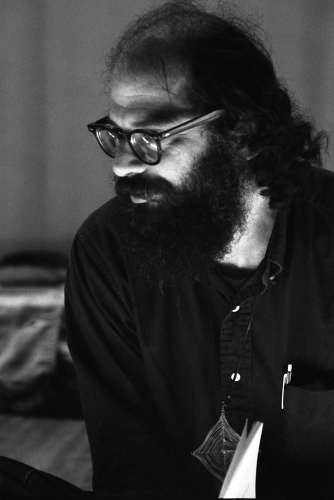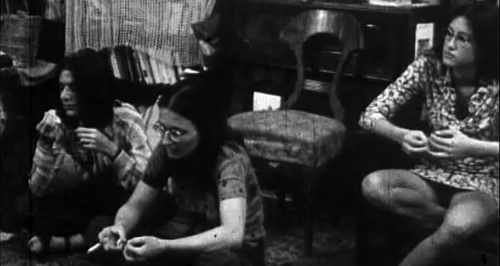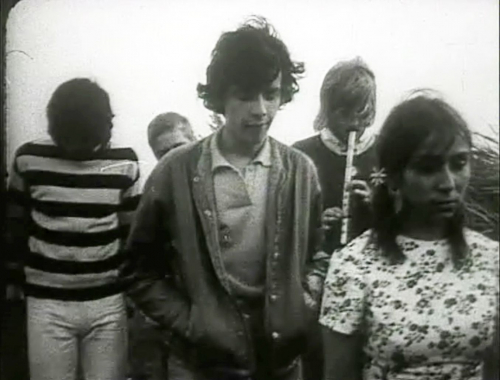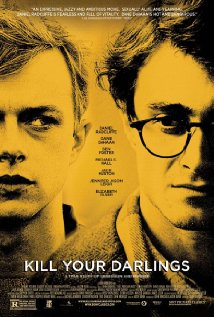This virtual exhibition, curated by Jean-Jacques Lebel, provides detailed insight into the legendary history of the Beat Generation, which, with its early beginnings in 1940s New York and San Francisco, was to later catch like a wildfire appearing in very different forms throughout the world. The leading figures among the Beat Generation were Allen Ginsberg, Jack Kerouac and William Burroughs. A selection of live performances, films (among others, classics such as “Pull My Daisy” with Kerouac and Ginsberg), texts, photographs, discussion, reports as well as reproductions of art works and handwritten drafts and numerous, hitherto unpublished documents are shown. This young generation's legacy was to invent a new language and new forms of life at the same time, and to create a poetic view of the world all of which continues to have an effect until today. The hitherto unpublished discussions between Ginsberg and Jean-Jacques Lebel also form part of the exhibition.
The exhibition was realized in the spring of 2013 through the cooperation of three French and one German institutions (Centre Pompidou, Metz; Champs Libres, Rennes; Fresnoy, Tourcoing; ZKM, Karlsruhe); and is to be presented in Budapest with several thematic programs, adapted to the actual venue.
“Hello Beatniks!
This is not, in a classic sense, an exhibition, where works are hung on walls, but far more a visual and acoustic anthology; a sensuous experience, a fantastic world full of projected images and a virtual stroll through a major multicultural movement that emerged during the Second World War in New York, and which spread throughout the world from 1955 onwards. The poet Allen Ginsberg, founding father and influential figure of the Beat Generation, will serve us as cartographer and guide. He will introduce us to our friends – who he photographed at different times – and, above all, their works; in so doing, he throws light on the unique personalities of each of them. Known and unknown films, public readings, recordings, reportage never seen before, texts, fine art, discussions, photographs and documents of all kinds... This compilation, until now, unpublished and shown here for the first time, offers an international, labyrinthine and multimedia perspective transcending the constraints of linear and didactic museum presentation.
Here, visitors are invited – without further delay – to step into the hallucinatory universe of the poets of the Beat Generation and to relive this collective and subjective adventure. (...) Thanks to Allen Ginsberg, we can follow step for step, the literary, cultural, political, existential and intellectual controversies in which the Beat Generation were involved. It is through him that we become acquainted with and are able to newly interpret a series of masterpieces of modern literature: works by Jack Kerouac, William Burroughs, Gregory Corso, Michael McClure, Gary Snyder, Peter Orlovsky and, naturally, Allen Ginsberg. One sees or hears them; one discovers their manuscripts, their drawings, their way of life, but also their commitment to the freedom of expression, and liberation from bourgeois morality; their struggle against ethnocentricity; homophobia and racial paranoia; for ecology. One may consider the pioneering role they played as writers and cosmopolitans at the center of a major international movement, which, in the 1960s, rebelled against the Vietnam War, Wall Street, the Pentagon, the atom bomb, the nuclear industry, and generally against all forms of cultural and political imperialism.
Incidentally, in his famous manifesto/poem, Howl, Ginsberg once again took up the biblical monster Moloch, which continued to cost more and more human victims. Karl Marx had already denounced Moloch as a symbol of the prevailing and aggressive capitalism. It is no mere chance that Ginsberg, Burroughs and their mutual friend Jean Genet took part in the demonstrations in Chicago, in 1968, and that a number of their young close friends used the opportunity to present a real, pink-colored and screeching pig as candidate for the American presidential elections. The spirit of Dada was, indeed, present, though all distinctions between political and artistic action had dissolved.
Furthermore, the films presented here, the discussions, the coverage, the photographs and texts especially highlight the way in which poets make reference to their predecessors and contemporaries, in particular, to the Asiatic and European: they have a close affinity with William Blake, Arthur Rimbaud, Guillaume Apollinaire, and Antonin Artaud. (...) It was with the Beat Generation, that the enormous worldwide movement of the counter culture emerged, for which the ‘indignant’ stands today, and from which future visionaries and utopians may draw their inspiration.”
(Jean-Jacques Lebel, April 2013)
At 4 p.m., on 9th November 2013, the exhibition's curator, Jean-Jacques Lebel delivers an exclusive guided tour. Language: English See video HERE.
"Nekem a Beat-ek..." ("Beat means to me...") A series of interviews on the Beat Generation with contemporary Hungarian poets, writers and musicans: Varga Líviusz, Závada Péter, Babiczky Tibor, Erdélyi "Superman" Zsolt és Karafiáth Orsolya
<iframe width="560" height="315" src="//www.youtube.com/embed/HFG7ufyRIdM?list=PLZCfG2Uw0zEYF7E3AjnTxRdKxADpG2Bwk" frameborder="0" allowfullscreen></iframe>Supported by Ministry of Human Resources, Palace of Arts, National Cultural Fund, French Institute, Goethe Institut, Kempinski, Népszabadság, PestiEst, blog.hu, A38, Magyar Narancs, Heti Válasz, Epson, Litera, BBS










Related contents

Guided Tour in Hungarian: Beat Generation / Allen Ginsberg 19. January, 2014, 00:00–00:00
Guided tour in Hungarian in the Ludwig Museum's exhibition entitled Beat Generation / Allen Ginsberg.
Admission with a valid exhibition ticket.

HYDROGEN MUSIC BOX 17. January, 2014, 00:00–00:00
Theatre performance - a tribute to the Beat Generation by a group of young actors from the University of Theatre and Film Arts, Budapest.

Exclusive guided tour with Jean-Jacques Lebel in the Beat Generation / Allen Ginsberg exhibition 14. January, 2014, 00:00–00:00
Exclusive guided tour in the Beat Generation / Allen Ginsberg exhibition, with Orsolya Karafiath.
Admission with a valid exhibition ticket.

Guided Tour in Hungarian: Beat Generation / Allen Ginsberg 12. January, 2014, 00:00–00:00
Guided tour in Hungarian in the Ludwig Museum's exhibition entitled Beat Generation / Allen Ginsberg.
Admission with a valid exhibition ticket.

"Beat generation" - Screening and discussion series 7. January, 2014, 00:00–00:00
Documentaries by Hungarian filmmakers, connected to the Allen Ginsberg exhibition

Guided Tour in Hungarian: Beat Generation / Allen Ginsberg 5. January, 2014, 00:00–00:00
Guided tour in Hungarian in the Ludwig Museum's exhibition entitled Beat Generation / Allen Ginsberg.
Admission with a valid exhibition ticket.

Guided Tour in Hungarian: Beat Generation / Allen Ginsberg 29. December, 2013, 00:00–00:00
Guided tour in Hungarian in the Ludwig Museum's exhibition entitled Beat Generation / Allen Ginsberg.
Admission with a valid exhibition ticket.

Exclusive guided tour with Földes László "HOBO" in the Beat Generation / Allen Ginsberg exhibition 28. December, 2013, 00:00–00:00
Exclusive guided tour with Földes László "HOBO" in the Beat Generation / Allen Ginsberg exhibition.
Admission with a valid exhibition ticket.

Guided Tour in Hungarian: Beat Generation / Allen Ginsberg 22. December, 2013, 00:00–00:00
Guided tour in Hungarian in the Ludwig Museum's exhibition entitled Beat Generation / Allen Ginsberg.
Admission with a valid exhibition ticket.

"Beat generation" - Screening and discussion series 17. December, 2013, 00:00–00:00
Documentaries by Hungarian filmmakers, connected to the Allen Ginsberg exhibition

Guided Tour in Hungarian: Beat Generation / Allen Ginsberg 15. December, 2013, 00:00–00:00
Guided tour in Hungarian in the Ludwig Museum's exhibition entitled Beat Generation / Allen Ginsberg.
Admission with a valid exhibition ticket.
Ginsberg Slam Hommage à Allen Ginsberg Slam poetry showcase performance 12. December, 2013, 00:00–00:00
Ticket price: 2800 HUF
Performers:
Amoeba Band (Sabák Péter, Boros Levente, Sági Viktor)
Slammers:
Kemény Zsófi
Tolnai Eszti
Horváth Kristóf - Színész Bob
Gábor Tamás - Indiana
Süveg Márk - Saiid
Bencsik Ádám - Ponza
Németh Péter - Zeek

"Beat generation" - Screening and discussion series 10. December, 2013, 00:00–00:00
Documentaries by Hungarian filmmakers, connected to the Allen Ginsberg exhibition
Today screening:
Partita (1974, 34', director: Miklós Erdély)
Életformák - játszma (1975, 47', director: Gábor Dobos, Péter Donáth)

Guided Tour in Hungarian: Beat Generation / Allen Ginsberg 8. December, 2013, 00:00–00:00
Guided tour in Hungarian in the Ludwig Museum's exhibition entitled Beat Generation / Allen Ginsberg.
Admission with a valid exhibition ticket.

Exclusive guided tour with Márton Simon in the Beat Generation / Allen Ginsberg exhibition 7. December, 2013, 00:00–00:00
Exclusive guided tour with Márton Simon slammer-poet in the Beat Generation / Allen Ginsberg exhibition.
Admission with a valid exhibition ticket.
Booking is required.

"Beat generation" - Screening and discussion series 3. December, 2013, 00:00–00:00
Documentaries by Hungarian filmmakers, connected to the Allen Ginsberg exhibition
Tündérszép lány / The Enchanting Girl
director: Szomjas György, 43', ff. 35mm, 1969

Guided Tour in Hungarian: Beat Generation / Allen Ginsberg 1. December, 2013, 00:00–00:00
Guided tour in Hungarian in the Ludwig Museum's exhibition entitled Beat Generation / Allen Ginsberg.
Admission with a valid exhibition ticket.
Family Matinee 30. November, 2013, 00:00–00:00
Creative session for children in connection with the Beat Generation / Allen Ginsberg exhibition and the Collection Display.
Integrated EduTuesday at the Ludwig Museum 26. November, 2013, 00:00–00:00
Special museum education workshop on methods of organising activities for children with mental difficulties. 4th meeting.

Guided Tour in Hungarian: Beat Generation / Allen Ginsberg 24. November, 2013, 00:00–00:00
Guided tour in Hungarian in the Ludwig Museum's exhibition entitled Beat Generation / Allen Ginsberg.
Admission with a valid exhibition ticket.
Family Matinee 23. November, 2013, 00:00–00:00
Creative session for children in connection with the Beat Generation / Allen Ginsberg exhibition and the Collection Display.

Beat Generation / Allen Ginsberg A poet from the Lower East Side 19. November, 2013, 00:00–00:00
Allen Ginsberg documentary connected to the Beat Generation exhibition

Guided Tour in Hungarian: Beat Generation / Allen Ginsberg 17. November, 2013, 00:00–00:00
Guided tour in Hungarian in the Ludwig Museum's exhibition entitled Beat Generation / Allen Ginsberg.
Admission with a valid exhibition ticket.
Family Matinee 16. November, 2013, 00:00–00:00
Creative session for children in connection with the Beat Generation / Allen Ginsberg exhibition and the Collection Display.

Art & Wine Lovers Club - Miklós Csabi boraival 12. November, 2013, 00:00–00:00
The Ludwig Museum's new initiative, the Art & Wine Lovers Club, aims to introduce the internationally more and more successful Hungarian wine culture and the novelties and aspiring talents of the recent gastro resolution - while the programs are clearly inspired by our exhibitions or pieces o

Guided Tour in Hungarian: Beat Generation / Allen Ginsberg 10. November, 2013, 00:00–00:00
Guided tour in Hungarian in the Ludwig Museum's exhibition entitled Beat Generation / Allen Ginsberg.
Admission with a valid exhibition ticket.

Exclusive guided tour with Jean-Jacques Lebel in the Beat Generation / Allen Ginsberg exhibition 9. November, 2013, 00:00–00:00
Exclusive guided tour in the Beat Generation / Allen Ginsberg exhibition, with the show's curator, Jean-Jacques Lebel. Language: English
Admission with a valid exhibition ticket.
Exhibition Opening: Beat Generation / Allen Ginsberg 8. November, 2013, 00:00–00:00
The Ludwig Museum – Museum of Contemporary Art invites you to the opening of the exhibition
Beat Generation / Allen Ginsberg
on Friday, November 8, 2013 at 6 p.m.

